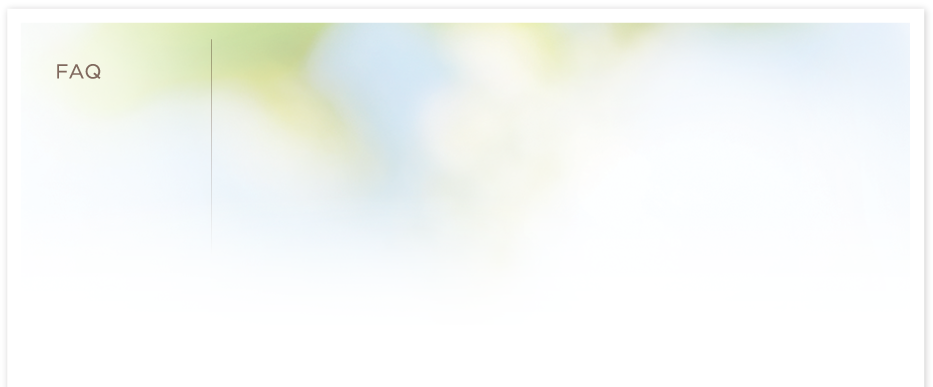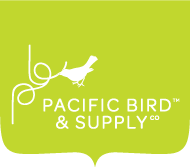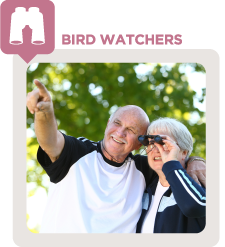

I ENJOY WATCHING THE BIRDS IN MY YARD. DOES THAT MAKE ME A BIRD WATCHER?
Technically, yes. Anyone who loves seeing a brilliant scarlet Cardinal take a bath or a Bluebird gathering materials for a nest or chickadees at the feeder against a drift of snow, is a bird watcher. Remember that you don't have to be an expert to enjoy watching and feeding wild birds...
Many people watch birds from the comfort of their own homes. Many others, who go into the wild to birdwatch, do so for sheer enjoyment, relaxation, and/or adventure. A number of other birdwatchers are also bird counters, wildlife photographers, or nature enthusiasts who often hike miles off the beaten path to find a particular species. According to the US Fish and Wildlife Service, there are currently 53.4 million birders in the United States alone, and this number continues to increase!
It is no surprise that this sport continues to grow at such a rapid pace. There are a great number of rewards that come with bird watching. Few other activities can bring such a sense of wonder, satisfaction, and connection with nature and peaceful solitude in today's busy world. Once you begin to watch and observe regularly, you will start to see the wonderful variety of wild birds in your area. And the best time to start is right now!
So sit back, relax and watch. Life. It just got more colorful. ™
Many people watch birds from the comfort of their own homes. Many others, who go into the wild to birdwatch, do so for sheer enjoyment, relaxation, and/or adventure. A number of other birdwatchers are also bird counters, wildlife photographers, or nature enthusiasts who often hike miles off the beaten path to find a particular species. According to the US Fish and Wildlife Service, there are currently 53.4 million birders in the United States alone, and this number continues to increase!
It is no surprise that this sport continues to grow at such a rapid pace. There are a great number of rewards that come with bird watching. Few other activities can bring such a sense of wonder, satisfaction, and connection with nature and peaceful solitude in today's busy world. Once you begin to watch and observe regularly, you will start to see the wonderful variety of wild birds in your area. And the best time to start is right now!
So sit back, relax and watch. Life. It just got more colorful. ™
WHY WOULD A WILD BIRD WATCHER USE PACIFIC'S WILD BIRD TREATS?
See them flock. Hear them sing.™
Many bird watching enthusiasts will find that Pacific's Wild Bird Treats are an easy-to-use, cost-effective way to attract a greater number of birds, making bird watching even more enjoyable.
As an avid bird watcher, use Pacific's Wild Bird Treats to entice birds to a desired natural area. As a bird photographer, use Pacific's Wild Bird Treats to attract birds to the perfect setting while still remaining in the birds' natural environment. In either case, whether observing or photographing birds, Pacific's Wild Bird Treats will enhance the health of wild birds, as well as preserve and support their populations by providing a source of protein and fat.
Many bird watching enthusiasts will find that Pacific's Wild Bird Treats are an easy-to-use, cost-effective way to attract a greater number of birds, making bird watching even more enjoyable.
As an avid bird watcher, use Pacific's Wild Bird Treats to entice birds to a desired natural area. As a bird photographer, use Pacific's Wild Bird Treats to attract birds to the perfect setting while still remaining in the birds' natural environment. In either case, whether observing or photographing birds, Pacific's Wild Bird Treats will enhance the health of wild birds, as well as preserve and support their populations by providing a source of protein and fat.
HOW CAN I ENHANCE MY BIRD WATCHING FROM HOME?
Get the birding bug! ™
One of the most rewarding features of birdwatching is the relationship you make with your backyard birds. And, with a little encouragement, some birds will accept you as a natural part of their environment—perhaps, even as a friend.
There are countless ways to create a healthy, happy, thriving bird habitat in your backyard! A good place to start is by providing birds with the four essential things they need: food, water, shelter, and a place to nest. However, additional tips maybe used to boost your bird watching experience. Here are some examples:
• Provide a variety of food choices for birds, including insects, seeds, nuts, fruits, and nectar. This will help maximize the number of bird species that visit your feeders
• Because so many birds eat insects and worms naturally, supplementing their diet with insects and worms, which are hard to come by in the wild, is a natural thing to do. By supplying a source of protein to insectivorous birds, you will help to ensure their health and survival and add to the population visiting your yard.
• If possible, offer multiple feeding locations. Doing so will bring you more kinds of birds than a single feeder, because each species will find its own preferred feeder type, level, location and food.
• Make sure to supply plenty of clean, unfrozen water, replenished daily.
• Go wild for birds! Chances are, the plants that are native to your area will provide natural sources of food for the birds. A good place to start is by contacting a local nursery that specializes in native plant species or searching for published resources that explain how to make a bird-friendly habitat.
• Don't worry if you are unable to feed your backyard birds for a period of time. Birds are used to having a food source disappear—they won't starve because of your lapse. It might take them a while to rediscover your yard when you return, but they'll be back.
One of the most rewarding features of birdwatching is the relationship you make with your backyard birds. And, with a little encouragement, some birds will accept you as a natural part of their environment—perhaps, even as a friend.
There are countless ways to create a healthy, happy, thriving bird habitat in your backyard! A good place to start is by providing birds with the four essential things they need: food, water, shelter, and a place to nest. However, additional tips maybe used to boost your bird watching experience. Here are some examples:
• Provide a variety of food choices for birds, including insects, seeds, nuts, fruits, and nectar. This will help maximize the number of bird species that visit your feeders
• Because so many birds eat insects and worms naturally, supplementing their diet with insects and worms, which are hard to come by in the wild, is a natural thing to do. By supplying a source of protein to insectivorous birds, you will help to ensure their health and survival and add to the population visiting your yard.
• If possible, offer multiple feeding locations. Doing so will bring you more kinds of birds than a single feeder, because each species will find its own preferred feeder type, level, location and food.
• Make sure to supply plenty of clean, unfrozen water, replenished daily.
• Go wild for birds! Chances are, the plants that are native to your area will provide natural sources of food for the birds. A good place to start is by contacting a local nursery that specializes in native plant species or searching for published resources that explain how to make a bird-friendly habitat.
• Don't worry if you are unable to feed your backyard birds for a period of time. Birds are used to having a food source disappear—they won't starve because of your lapse. It might take them a while to rediscover your yard when you return, but they'll be back.
SHOULD I STOP FEEDING MY BIRDS IN THE WINTER? WILL IT AFFECT THEIR MIGRATORY PATTERNS?
We are asked this question all the time. The simple answer is: no. In fact, not only will a continuous food and water supply benefit wild birds, but a year-round feeding program will entice different species to your yard or area as migratory birds pass through from north to south for the winter, and south to north for the summer.
If birds (and butterflies, too) traverse your backyard but never seem to stay, it may be because your yard doesn't provide a varied, long-term food supply. Birds that visit your garden need to find food 365 days a year. Small birds eat almost constantly during daylight hours in the winter, and migratory songbirds need large amounts of food for varying amounts of time.
Remember, bird migration is triggered by changes in day length and hormones, not the availability of food. Birds that frequent feeders usually will not linger past their normal migration time.
So keep those feeders up if you enjoy watching the birds. You are not persuading any bird to linger beyond its time.
If birds (and butterflies, too) traverse your backyard but never seem to stay, it may be because your yard doesn't provide a varied, long-term food supply. Birds that visit your garden need to find food 365 days a year. Small birds eat almost constantly during daylight hours in the winter, and migratory songbirds need large amounts of food for varying amounts of time.
Remember, bird migration is triggered by changes in day length and hormones, not the availability of food. Birds that frequent feeders usually will not linger past their normal migration time.
So keep those feeders up if you enjoy watching the birds. You are not persuading any bird to linger beyond its time.
I LOVE WATCHING THE HUMMINGBIRDS OUTSIDE MY WINDOW, BUT THEY MIGRATE. SHOULD I STOP FEEDING THEM AT THE END OF THE SUMMER?
It's a myth that a hummingbird, or any bird for that matter, will stick around a feeder and neglect to migrate. As much as we'd like to think we're in control of the birds at our feeders, we aren't. Instinct and hormonal urges are what drive birds to migrate, and hummingbirds are no different.
Besides, there are good reasons to leave your hummingbird feeder up in the fall. It offers late migrant hummers a refueling spot, long after most nectar-producing flowers have ceased blooming. Leave your feeders up until the nights get too cold for the solution to remain unfrozen. Then, when a super-late hummingbird appears, you'll be ready.
Remember, bird migration is triggered by changes in day length and hormones, not the availability of food. Birds that frequent feeders usually will not linger past their normal migration time.
So keep those feeders up if you enjoy watching the birds. You are not persuading any bird to linger beyond its time.
If you have any questions or concerns, please contact one of our representatives at 888.541.BIRD (2473) or by email at info@pacificbirdandsupplyco.com. We will do all we can to answer your inquiries to the best of our abilities. Pacific Bird and Supply Company, Inc.™ is committed to protecting the health and happiness of wild birds. We look forward to accomplishing this mission with you.
Besides, there are good reasons to leave your hummingbird feeder up in the fall. It offers late migrant hummers a refueling spot, long after most nectar-producing flowers have ceased blooming. Leave your feeders up until the nights get too cold for the solution to remain unfrozen. Then, when a super-late hummingbird appears, you'll be ready.
Remember, bird migration is triggered by changes in day length and hormones, not the availability of food. Birds that frequent feeders usually will not linger past their normal migration time.
So keep those feeders up if you enjoy watching the birds. You are not persuading any bird to linger beyond its time.
If you have any questions or concerns, please contact one of our representatives at 888.541.BIRD (2473) or by email at info@pacificbirdandsupplyco.com. We will do all we can to answer your inquiries to the best of our abilities. Pacific Bird and Supply Company, Inc.™ is committed to protecting the health and happiness of wild birds. We look forward to accomplishing this mission with you.








